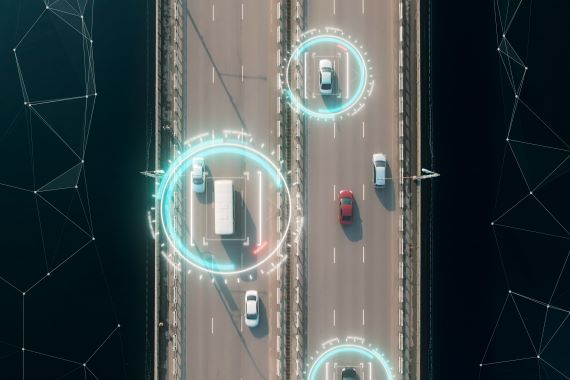
20 October 2022
Geolocation of the shipment
Access to updated shipment data can hardly be overestimated, so geolocating a shipment is a very relevant topic.
Much of the information about its trajectory comes from warehouses and logistics centers, where receipt and release of goods is recorded using barcode readers, QR or RFID tags. In many cases, such information is sufficient, as it confirms the completion of a certain stage of the logistics process and allows an approximate assessment of the delivery time.
However, there are situations when cargo should be monitored continuously or very frequently. This applies to the transportation of dangerous substances that are valuable, subject to special control, etc. At that time with help come devices whose task is to geolocate the shipment. They are usually installed in packages, containers, semi-trailers or other places in constant contact with the shipped goods. Thanks to them, the customer ordering the service and the employees supervising the forwarding can get to know the current location in almost real time. Sometimes this information is also important for the insurer, who in exchange for making it available can lower the insurance premium.
The geolocation tracker, of course, does not protect against an accident or theft, but it allows you to start rescue operations immediately, which greatly increases the chances of removing the danger and bringing the assignment to a happy end.
Geolocation of online and offline shipment
Geolocation methods can be assigned to two categories. In the case of online devices, the tracker combines two functions: a GPS (or similar) receiver and a transmitter that transmits information about geographic position, altitude, temperature, speed, etc. This feedback signal must be transmitted over a network that is available during transport – generally a terrestrial or satellite cell phone network.
The data is not sent continuously. Most often, the information about the tracker’s successive positions is stored in the device’s memory, and every few minutes or hours the transmitter turns on and sends it to the recipient’s computer system. The geolocation system must take into account interruptions in access to the network when the tracker is out of network range: in a tunnel, a warehouse made of steel sheets or inside a vehicle with a body made of material that absorbs radio waves.
Online trackers can be detected with devices that recognize radio wave emissions when they try to send information.
Offline devices do not have transmitters, and information about the route of travel and the events that have been recorded can be read only post factum, after the shipment has been picked up and opened. Although we do not gain access to real-time information, such devices are also helpful, and the data they collect can be used to assess the quality of services provided, the accuracy of the declarations of carriers cooperating with the logistics company compared with the facts, etc.
The customer says: I check
Since trackers have become widely available and significantly cheaper, customers have gained the ability to check the location of their shipment regardless of the information from the logistics company or carrier providing them with the service. There are many solutions: from homemade trackers based on microcontroller boards like Arduino and similar, to professional solutions such as Airtag provided by Apple. It’s worth keeping this in mind when contacting a customer, for example, about rescheduling a delivery. Providing the customer with the current status of the order and the real reasons for any delay is the safest option, since it doesn’t expose the carrier to embarrassment, if the customer geolocates the shipment on his own.
Hazards
There is a group of customers who like to be well-informed and, at the same time, appreciate the guarantee that their shipments will not be tracked by any geolocation devices other than those they choose to install themselves. This applies to the transport of high-value goods, hazardous materials or those of strategic importance. It would be an exceptionally bad idea, for example, to put a tracker on a shipment of medical supplies or military equipment headed to an organization helping civilians or the military in a war-ridden country. Intercepting information about the route of travel and delivery locations of such materials would make it possible to locate warehouses and facilitate their destruction. The vehicle transporting the goods or the entire transport column would also be at risk.
















